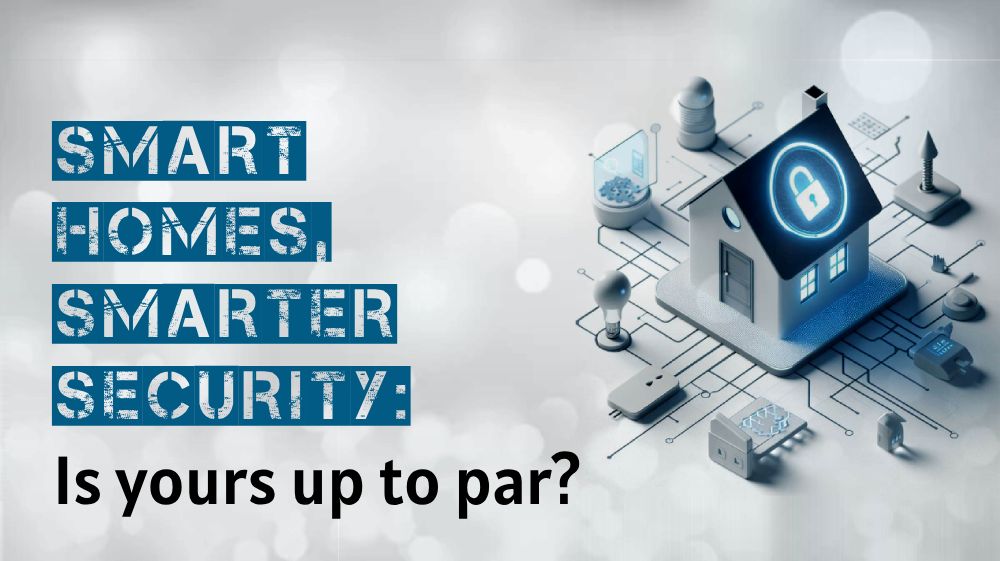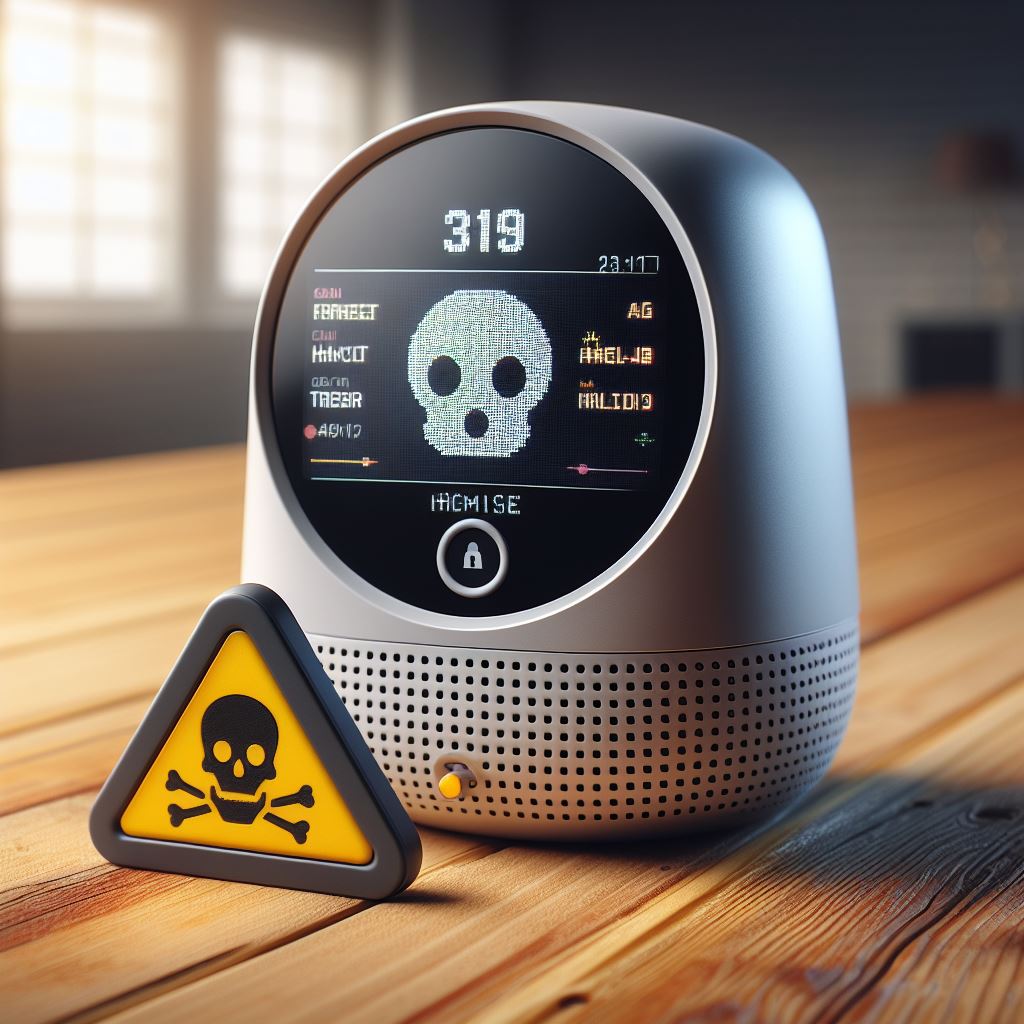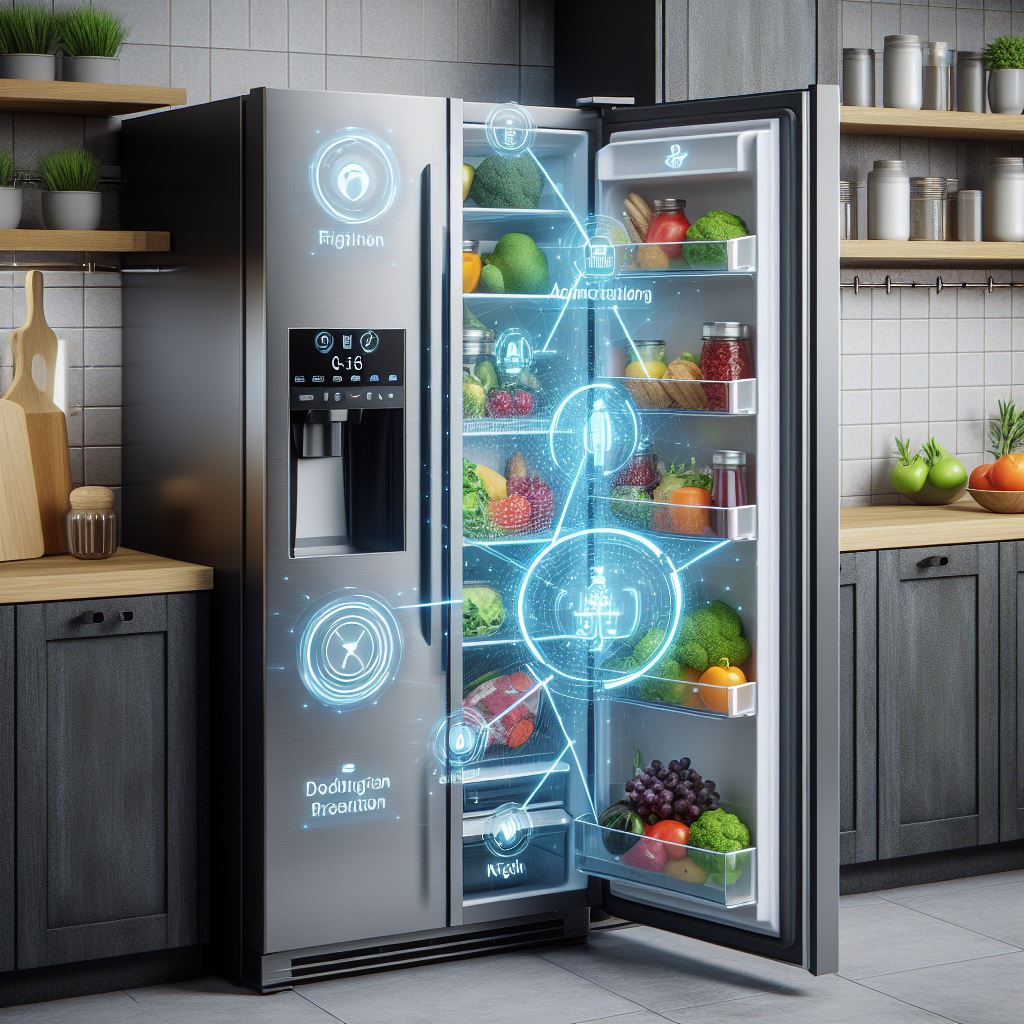
The Evolving Security Landscape of Smart Home Devices
The Internet of Things (IoT) technology has made many critical areas of our daily lives easier to handle than ever before. For instance, you may now operate numerous electronic gadgets in your house using easy voice commands, such as lighting, air conditioning, thermostats, iron boxes, and even your refrigerator. With intuitive voice commands tailored to your preferences, you can automatically turn on or off lights in different rooms at specific times, switch on the AC before arriving home, or even control devices like the ion box or AC unit that may have been left on inadvertently. Imagine returning home to a pre-set ambiance with lights adjusted to your preference, the AC cooling the room to the perfect temperature, or a playlist of your favorite music starting—all initiated with a simple voice command you made on your way home from the office. Checking the quantity of milk in your fridge directly from the supermarket and securing your home and surroundings by repositioning security cameras based on your preferences are just a couple of the countless tasks that Home Automation, also known as Smart Home Technology, powered by the technological marvel called the Internet of Things, allows us to effortlessly accomplish.

From home entertainment to home automation and even extending to home security, the options available for managing things in a smart home system are now widespread. The advanced smart home devices in this field offer a plethora of options for security systems, starting from smart gates and smart door locks to remote monitoring smart cameras. The acceptance of smart home technologies is evident in the popularity and trust placed in top technology brands like Amazon, Google, and Apple.
Despite the fierce competition among various brands in this field, Amazon’s Alexa voice assistant technology, coupled with the Echo smart speaker system, operates as the Amazon Smart Home System. Google’s Assistant technology, integrated with the Google Nest smart speaker, operates as the Google Smart Home System. Apple, recognized by the name Siri, has integrated its voice assistant technology with the HomePod smart speaker, functioning as the Apple HomeKit system. Furthermore, Chinese companies such as Xiaomi, with their Mijia Home, and M.I. Home, actively compete in the market by offering innovative smart home solutions.
These advancements in smart home technology, ranging from home entertainment to security, reflect the continuous evolution and integration of top-notch technologies, making our homes smarter and more connected than ever before.
Security Challenges Amidst Conveniences
Just as every good thing comes with some potential downsides, the same holds true for smart home systems. Recognizing and addressing these concerns is essential for maintaining both security and privacy. The exponential growth of connected devices in our homes poses potential security risks, jeopardizing the confidentiality of our personal information. It is crucial to be aware that the convenience brought by these technologies may also create vulnerabilities, leading to security incidents that could compromise our private data.
We must understand the reality that the extensive collection of data by smart home devices can create a possibility of security breaches and mishandling of our sensitive information. Therefore, being informed and vigilant about potential security threats is crucial. Awareness empowers us to take necessary precautions, such as regularly updating device firmware, using strong and unique passwords, and implementing additional security measures like two-factor authentication.
Moreover, privacy concerns arise from the nature of smart home technologies, as they involve the continuous monitoring and collection of data within our living spaces. It is essential to be mindful of the potential misuse or unauthorized access to this personal data. Selecting reputable and trustworthy brands, understanding the privacy policies of smart home devices, and adopting privacy-enhancing features provided by these technologies can contribute to mitigating these concerns.
In conclusion, while enjoying the benefits of smart home technologies, it is paramount for users to be proactive in addressing and mitigating security and privacy risks. By staying informed, adopting best practices, and making informed choices, individuals can ensure a balance between the convenience offered by smart home systems and the safeguarding of their security and privacy.
Unveiling Smart Home Vulnerabilities

In incidents where smart home systems were hacked, including smart locks and cameras, along with access to security devices, various news reports from different parts of the world have been widely reported. One notable case occurred in 2020 in New York, where the hacking of a Google Nest Smart Home System, installed in their new home, resulted in a very unsettling experience for the family. Hackers infiltrated the system, gaining rapid control over the devices in the house. They swiftly accessed security features, such as the thermostat in the corridors, raising the temperature to 90 degrees, observed activities through the double cameras installed, and even played unsettling conversations through the Two-Way Smart Speakers. The incident involved hackers exploiting technical flaws in the Google Nest platform, causing significant distress to the users. The rapid response by the hackers to manipulate the controls of the household devices highlights the vulnerability of smart homes to security breaches. This particular case underscores the importance of enhancing security protocols for smart home systems to protect users from such intrusions.
When leading brand smart home systems such as Google Nest, Amazon Alexa, and Apple Home Kit are subject to hacking, it goes without saying how much security risk consumers who buy and utilize cheap Chinese smart home systems face. All of these cases indicate a new realm of major security threats faced by IoT-based smart home gadgets.
Are home security devices the only security threat?

A common perception is that only home security devices like smart locks and smart security cameras pose a greater security risk. But that perception is not entirely correct. For example, suppose the only smart device you use in your home is a smart fridge. Have you ever thought about the security threat that smart fridges can pose to you and your family? There are many systems in modern smart fridges such as food monitoring through a built-in camera, expiry date tracking, food inventory and usage tracking, and meal planning based on the food items available inside the fridge. If a hacker manages to take control of this smart fridge, which is always connected to the Internet, the smart fridge has sensors that track when and how often the door is opened, and a camera inside can monitor the usage status of stored items. By capitalizing on features like these, and analyzing usage patterns, a hacker can quickly learn that a home has been unoccupied for a long time, or that a family has been away for more than a day. If there is no long-term activity, hackers will know that no one is using it and can easily plan and carry out house robbery plans during that time. The villain here is the data we inadvertently expose ourselves to. Many smart devices that we think are innocuous like this are managing our valuable data without our knowledge. Here we are talking about ensuring that the data transmitted in this way does not reach someone else.
Balancing Act: Enhancing Security Without Sacrificing Convenience
While smart devices are most appealing for their convenience, they often open multiple avenues for security vulnerabilities. One significant vulnerability lies in the lack of robust encryption in many connected devices such as smart locks and cameras. This lack of encryption makes them susceptible to exploitation by hackers. Default passwords are seldom changed, and timely updates to the firmware/software of smart devices are often neglected. These oversights expose our privacy to an open window that might go unnoticed until a critical moment.
It is imperative for users to actively participate in maintaining a secure environment for smart home convenience. Strong and unique passwords for each device act as the first line of defense against potential threats. Vigilant scrutiny of privacy settings for each device and opting for unnecessary data storage minimization contribute significantly to enhancing overall security. Researching a device’s security features before purchase and relying on brands that adhere to stringent online security standards can provide additional layers of protection.
Ultimately, a careful evaluation of the security features and privacy standards of smart devices, combined with proactive measures such as adopting strong passwords and limiting unnecessary data storage, can strengthen the defense against potential security breaches while maintaining the convenience offered by smart home technologies.
Security Measures
Smart home gadgets, with their enhanced convenience and automation, are undoubtedly beneficial. However, it is essential to ensure that these conveniences don’t compromise our safety. If internet-connected devices are not properly secured, cybercriminals could exploit vulnerabilities. Therefore, maintaining a balance between smart living and security is crucial.
Even though these security concerns limit the possibilities, we need to be aware that they don’t render the advantages useless. If devices connected to the internet are not appropriately managed, opening our home’s doors to cyber threats becomes equivalent to leaving our physical doors wide open for anyone to walk through.
Nevertheless, by implementing proper security measures, we can mitigate potential risks and maintain the safety of our smart homes and technological ecosystems. Simple security precautions can make a significant difference:
- Use Strong and Secure Passwords
Avoid using passwords that are easy to guess or understand. Create long and complex passphrases that are both simple to remember and difficult to crack. Combine uppercase and lowercase letters, numbers, and special characters to form strong passwords, ideally with a minimum length of 12 characters.
Avoid using default factory passwords. Strengthen your defenses by ensuring that each of your devices has a robust password. Make sure that your first line of defense for each device in your security setup consists of strong passwords.
- Limit Data Storage
Carefully review and configure privacy settings for each smart device you own. Disable any unnecessary data storage options. Opt-out of data sharing that is not essential for the optimal functioning of the device.
Disable features such as “Improve Product Experience” that involve sharing data unless necessary. For voice assistants, analytics, recording reviews, location tracking, and similar settings, disable maximum data sharing options.
For security cameras, enable facial recognition features only if necessary. If storing footage locally, configure settings to use local storage whenever possible.
- Choose Secure Devices
When purchasing new smart gadgets, conduct thorough research on well-established brands known for their security track records. Avoid lesser-known manufacturers or brands with reduced prices.
Select devices with automatic security updates, encrypted data transmission, and robust network security features. Check reviews for the product’s established brand, warranty, and customer support.
- Update your smart home devices and ensure security.
Critical security patches, including firmware/software updates, are included to address vulnerabilities and issues in the system.
Schedule automatic updates whenever possible. If manual updates are required, check for the latest software releases, verify them, and promptly install.
Do not permit automatic updates for your virtual resistance – manually inspect and approve software updates to ensure the security features are up to date.
Be cautious not to compromise the current security by allowing timely and necessary software updates.
- Use a VPN (Virtual Private Network)
By setting up a Virtual Private Network (VPN), you add an extra layer of security. A VPN encrypts the internet traffic to and from your devices, making it inaccessible to those outside.
In the operation of your smart home network, a VPN prevents hackers from intercepting data transfers between your connected devices and the servers that manage them.
VPN security configurations are crucial for controlling unauthorized access.
- Think about Device Placement
When setting up your smart home devices, consider being mindful of where you install them. Avoid placing smart devices, such as microphones and cameras found in highly sensitive areas like bedrooms and bathrooms. Minimize the inclusion of smart devices that have microphones and cameras in places where maximum privacy is desired.
While voice assistant devices are convenient everywhere, strategically install them to address privacy concerns. For devices like smart speakers and security cameras, reduce unnecessary exposure to private discussions by placing them in locations where private conversations are less likely to occur.
Carefully select the placement of smart devices to protect personal spaces, and at the same time, make use of helpful features in situations where assistance is needed.
Summary
In the evolving landscape of smart home technology, where advancements occur daily, it is crucial not to overlook security concerns. Just like in any other technology, a thorough understanding of the security risks associated with smart home technology is essential. The active security measures mentioned above not only ensure the safety of your smart home but also transform your residence into a fortress of convenience and privacy. Stay vigilant and make your smart home secure!
About The Author
Deepu Balan
Hi there! I’m a web UI/UX architect. This is my online playground, my beautiful space to share my passions, my work and what I find inspiring.
